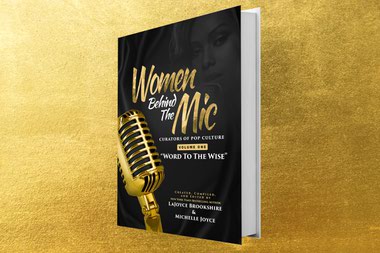
Anatomy of a Song By Marc Myers, $26.
Many of us think we know the stories behind our favorite songs. In the digital era, there’s no shortage of information online for the curious listener. But it takes a storyteller like Marc Myers to put trivia into its historical context, to make a narrative out of what would otherwise just be speculation. Myers’ Anatomy of a Song: The Oral History of 45 Iconic Hits That Changed Rock, R&B and Pop is a collection of the author’s columns by the same name from The Wall Street Journal; here, though, the author has arranged them chronologically and added a short introduction to the original. Anatomy of a Song reads, as Myers wanted it, “like a podcast. In the words of the songwriters, producers and singers themselves, we learn about the very private moments when our shared musical history was born.
Myers starts with Lloyd Price’s “Lawdy Miss Clawdy” in 1952 and traces musical development through 45 songs—a nod to the ubiquitous vinyl singles—ending in 1991 with R.E.M.’s “Losing My Religion.” In each of these short essays, which can be read either in or out of book order, Myers offers a bit of cultural history—how did the technology, the values or the zeitgeist impact each song’s sound? Myers’ book succeeds as a collection because he reveals the paradox of popular music: the magical change that transpires once the personal becomes public. Whether he describes Otis Redding watching the ships come in, writing “(Sittin’ on) The Dock of the Bay,” or Dion DiMucci pounding tables in a basement party to create what later became “Runaround Sue,” Myers shows us how these songwriters artfully, purposefully and sometimes accidentally tap into our secret yearning with their own.
There’s all kinds of fun stuff here. Did you know that Farrah Fawcett inspired the song “Midnight Train to Georgia?” Or that Janis Joplin wrote “Mercedes Benz” while goofing with Rip Torn and his wife as “Hey Jude” blared from a jukebox? Myers’ “love story” doesn’t “purport to be a list of the best songs ever recorded,” but rather “a subjective collection of music milestones” arranged into “a starting point for conversation and debate.”
Perhaps the greatest gift of Anatomy of a Song is its range. Myers considers widely the definitions of rock, R&B and pop, including their influences from a variety of sources. Most tender, perhaps, is his depiction of Joni Mitchell’s inspiration for “Carey,” and he covers everything from the big sounds of “Proud Mary” to the TV glitz of Elvis’ “Suspicious Minds” comeback. This is a book that encourages you to go back into your record collection, to the hits you think you remember well.







